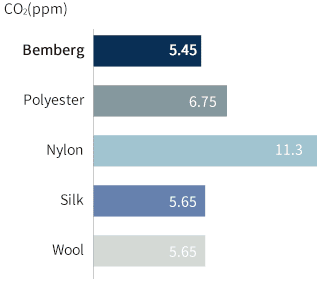BEMBERG FIBRE
 /QdcWozQaNgu1oKa5CtK2QpCO+Q5PCLUyoELszZiyebOdW1Q4s++QpoZSIHrKaRe0lsYXEi0bttbAl7H6RKoaTDiRoxpeQ2U1MCz9fpAjUjA0cK1oZXveHqDLfwpqNiUPFAWGF3oS0rP3reRpY13AnmkLJxbyoyt12xIIJYUmkti8JrPYOfNHU9PXeNGTrFVhl58Kk/1ojo5oOPZK7RkcrwkSbInmQhtFnVZ4SmnVX0qNzGLrImGPm+gDFVLwlckAaEMWbPxGMf2XDtH0MECZVvcLDrTn4DW0kz4ZPTgSBmfAyn4OGtHScQLY4AW07lvp/Q+RKd1K/TOg94OYIdb1GU2v2eUCetuDxo7p9xt2JY2ZBEdSzOfHXvK6J8DrXCzctfrtd/Q17VpKUshKpCp/2D+ZM99eoYs700HymUbEjsyOdWGUaRjympPsWcanLxGbbIdtmwYKFvC13KZkETobgWyxCq8bEPDkDI8Vi0uRPKgik5K/D6uk1EGZ89Q+xgS5TRtKRsCSaLZfLGY0ZevxLoFB2N13UBrAtkh1bJilKkzHeWyEdwYCK2cZXQiG86BZ6EPMaIM5KbpYq0Gyi4QYckoM4TQ5trnMCGYiLCIxiHfwzVlUIse+bx3bL+hLKQVRcrgRVP4TktZNqJMZYdsYnXBXVOUrfDH2DlNULbH3WVy3LVQiWjrj7mKVNwzyoRGgvDlaBGSkrXQi+eRY7/594gy0GPZqpqkbI2KSNaOprQdU6ZhtcURZU8DZUdlvBX2Xu0NFQ1Cd43ZiTZMkDwgDilTcFPkE19PUIbBcrF+GiJ1pijzMcyHtuwJygIdXshTGzw3j1GrXFbPKFvUGPYDr8ZulVoubojVRRANlJ0c2M1Vwi1tNlTcgDIBKSth/3ADNAnE8YqU1GNJTAxq2/Fb2D68p+wCQd7MlK3VI31TwOCpq/IZ7M09dJYVyD+lbObCpuW0jGQB7yoWc3LUWkm3UTv1lEUQ2Uxra6MkmcqIMmA61YGyA/QijX4hO9issIQ/1bwPeEJzVxYI7AnCB/isbt8wbarp4IKQGkO1eCASlXWZNkzlBNuQQl9Cq6PQV7xAyjJL9lUXdQ3tl9deRgyfUpZAGIsNUrqNJDdS8REKNWq8LTHXqDYqx7KioWEe11JsH3GThlw7EmXrbbdCHzvnWFHszDfQ7Z6tyKGU6bLfYKRX6qMJ0ghbyW8Nuarb/jyOFPpP8uG2BAIrtcKhNkLUWw+gVm2WI6EWXI0OFkgq2RD0Rf88tZG9psSEN7GeImsLVQ4FzZecHQQp4u32eEHpHCDAO7Q9+quW0YK1swrCVnvrGILZfVRGysbsDb4wxca+wT9K+4n+q9J2TLKx8dOmtRnoT6MwcGobH9lPeB05puNtRk52GrY32cCFtElW6Yl0t4Lzh+2zu0PkeIRc9OSp38K7wlKOfZU3x9HZaTVczOrf/mB2FYainljlnohybEvC87p/ZLMhCr3LBoPVupztNtZg86nNJ8kR+MjE9M0Tp9H8H2Zn2c2jIPqHHRxbFNbb5/w5lHmR/3ty8/DvblP8wA3+B3xc+LvPLhYPAAAAAElFTkSuQmCC" />
/QdcWozQaNgu1oKa5CtK2QpCO+Q5PCLUyoELszZiyebOdW1Q4s++QpoZSIHrKaRe0lsYXEi0bttbAl7H6RKoaTDiRoxpeQ2U1MCz9fpAjUjA0cK1oZXveHqDLfwpqNiUPFAWGF3oS0rP3reRpY13AnmkLJxbyoyt12xIIJYUmkti8JrPYOfNHU9PXeNGTrFVhl58Kk/1ojo5oOPZK7RkcrwkSbInmQhtFnVZ4SmnVX0qNzGLrImGPm+gDFVLwlckAaEMWbPxGMf2XDtH0MECZVvcLDrTn4DW0kz4ZPTgSBmfAyn4OGtHScQLY4AW07lvp/Q+RKd1K/TOg94OYIdb1GU2v2eUCetuDxo7p9xt2JY2ZBEdSzOfHXvK6J8DrXCzctfrtd/Q17VpKUshKpCp/2D+ZM99eoYs700HymUbEjsyOdWGUaRjympPsWcanLxGbbIdtmwYKFvC13KZkETobgWyxCq8bEPDkDI8Vi0uRPKgik5K/D6uk1EGZ89Q+xgS5TRtKRsCSaLZfLGY0ZevxLoFB2N13UBrAtkh1bJilKkzHeWyEdwYCK2cZXQiG86BZ6EPMaIM5KbpYq0Gyi4QYckoM4TQ5trnMCGYiLCIxiHfwzVlUIse+bx3bL+hLKQVRcrgRVP4TktZNqJMZYdsYnXBXVOUrfDH2DlNULbH3WVy3LVQiWjrj7mKVNwzyoRGgvDlaBGSkrXQi+eRY7/594gy0GPZqpqkbI2KSNaOprQdU6ZhtcURZU8DZUdlvBX2Xu0NFQ1Cd43ZiTZMkDwgDilTcFPkE19PUIbBcrF+GiJ1pijzMcyHtuwJygIdXshTGzw3j1GrXFbPKFvUGPYDr8ZulVoubojVRRANlJ0c2M1Vwi1tNlTcgDIBKSth/3ADNAnE8YqU1GNJTAxq2/Fb2D68p+wCQd7MlK3VI31TwOCpq/IZ7M09dJYVyD+lbObCpuW0jGQB7yoWc3LUWkm3UTv1lEUQ2Uxra6MkmcqIMmA61YGyA/QijX4hO9issIQ/1bwPeEJzVxYI7AnCB/isbt8wbarp4IKQGkO1eCASlXWZNkzlBNuQQl9Cq6PQV7xAyjJL9lUXdQ3tl9deRgyfUpZAGIsNUrqNJDdS8REKNWq8LTHXqDYqx7KioWEe11JsH3GThlw7EmXrbbdCHzvnWFHszDfQ7Z6tyKGU6bLfYKRX6qMJ0ghbyW8Nuarb/jyOFPpP8uG2BAIrtcKhNkLUWw+gVm2WI6EWXI0OFkgq2RD0Rf88tZG9psSEN7GeImsLVQ4FzZecHQQp4u32eEHpHCDAO7Q9+quW0YK1swrCVnvrGILZfVRGysbsDb4wxca+wT9K+4n+q9J2TLKx8dOmtRnoT6MwcGobH9lPeB05puNtRk52GrY32cCFtElW6Yl0t4Lzh+2zu0PkeIRc9OSp38K7wlKOfZU3x9HZaTVczOrf/mB2FYainljlnohybEvC87p/ZLMhCr3LBoPVupztNtZg86nNJ8kR+MjE9M0Tp9H8H2Zn2c2jIPqHHRxbFNbb5/w5lHmR/3ty8/DvblP8wA3+B3xc+LvPLhYPAAAAAElFTkSuQmCC" />
Bemberg is a regenerated fiber made from cotton
linter,
a raw material that is pre-consumer waste.
a raw material that is pre-consumer waste.
Derived from cotton
Born from cotton linter
Born from cotton linter
Bemberg is the brand name for cupro, which is regenerated
cellulose fiber made from cotton.
Made from cotton linter – the fuzz around the cotton
seed
Asahi Kasei uses its proprietary technologies to refine and
dissolve the linter that is not normally used as fiber, transforming it into
pure regenerated
 Each Bemberg fiber is extremely fine and has round cross section, largely free from the unevenness of natural fibers, and uniform in thickness. In addition, unlike cotton or rayon, the Bemberg fiber's surface is multiporous and free from a surface skin layer, giving it excellent color development and a smooth, silky luster.
Each Bemberg fiber is extremely fine and has round cross section, largely free from the unevenness of natural fibers, and uniform in thickness. In addition, unlike cotton or rayon, the Bemberg fiber's surface is multiporous and free from a surface skin layer, giving it excellent color development and a smooth, silky luster. Bemberg has a near circular cross section and a smooth surface. It is also more uniform in thicknes than other natural fibers.
Bemberg has a near circular cross section and a smooth surface. It is also more uniform in thicknes than other natural fibers.
 The graph shows degrees of skin irritation by fabric. Bemberg feels even gentler to the skin than silk, considered by many to be a soft and low-irritating material.
The graph shows degrees of skin irritation by fabric. Bemberg feels even gentler to the skin than silk, considered by many to be a soft and low-irritating material. Bemberg is a breathable fiber with micro pores that quickly absorb moisture and release it to the outside. Thus Bemberg effectively reduces clinging and interior dampness.
Bemberg is a breathable fiber with micro pores that quickly absorb moisture and release it to the outside. Thus Bemberg effectively reduces clinging and interior dampness.
 Compared to polyester, Bemberg retains less moisture between the skin and the fabric. Perspiration passes through the fabric and escapes into the air.
Compared to polyester, Bemberg retains less moisture between the skin and the fabric. Perspiration passes through the fabric and escapes into the air. One prominent feature of Bemberg is its ability to moderate the temperature inside the garment. It feels cool in summer, warm in winter, and because it even reduces static buildup, Bemberg is comfortable to wear year round.
One prominent feature of Bemberg is its ability to moderate the temperature inside the garment. It feels cool in summer, warm in winter, and because it even reduces static buildup, Bemberg is comfortable to wear year round.

 The graph compares standard moisture regain between different fabrics under normal conditions.*
The graph compares standard moisture regain between different fabrics under normal conditions.*
It shows that Bemberg retains the largest amount of moisture.(* normal condition: 20°C 65%RH)Low environmental impact even when burned
Even when burned, Bemberg produces less toxic substances.- ■Gases released by the combustion of fibers



 The Unique Fiber MorphologyBemberg filament is nearly circular in cross-section, and largely free from the shape and diameter irregularities found in most natural fibers. This gives Bemberg its brilliant, uniform hues, and its silky luster. Unlike cotton and rayon, moreover, the Bemberg filament has no surface skin and is highly porous. The end result is superior dyeability, moisture and water absorption, and compatibility with finishing resins.
The Unique Fiber MorphologyBemberg filament is nearly circular in cross-section, and largely free from the shape and diameter irregularities found in most natural fibers. This gives Bemberg its brilliant, uniform hues, and its silky luster. Unlike cotton and rayon, moreover, the Bemberg filament has no surface skin and is highly porous. The end result is superior dyeability, moisture and water absorption, and compatibility with finishing resins.





 Cool in summerThe amorphous region of Bemberg fibers retains moisture through which heat passes and escapes to the outside. The amount of moisture held in humid weather is twice that in dry weather.
Cool in summerThe amorphous region of Bemberg fibers retains moisture through which heat passes and escapes to the outside. The amount of moisture held in humid weather is twice that in dry weather. Warm in winterBemberg quickly absorbs a large amount of moisture from our bodies and generates heat. Unique technology enables the fabric to retain this heat, and thus create warmth within the garment.
Warm in winterBemberg quickly absorbs a large amount of moisture from our bodies and generates heat. Unique technology enables the fabric to retain this heat, and thus create warmth within the garment. Releases staticThe moisture retained in Bemberg fibers acts as a pathway for releasing static into the air. This effectively reduces problems such as small shocks and clinging.
Releases staticThe moisture retained in Bemberg fibers acts as a pathway for releasing static into the air. This effectively reduces problems such as small shocks and clinging.
Thanks for sharing this wonderful blog. Click here for - bemberg fabric
ReplyDelete